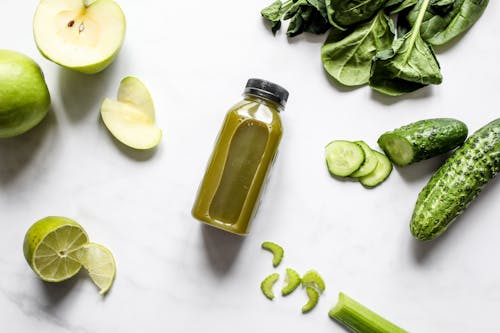7 fruits and vegetables rich in zinc and magnesium
# **Fruits and Vegetables Rich in Zinc and Magnesium: A Complete Guide**
## **Introduction**
Zinc and magnesium are two essential minerals that play crucial roles in maintaining optimal health. Zinc supports immune function, wound healing, and DNA synthesis, while magnesium is vital for muscle function, nerve signaling, and bone health. While many people turn to supplements, a well-balanced diet rich in fruits and vegetables can naturally provide these nutrients.
In this blog post, we’ll explore the best **fruits and vegetables high in zinc and magnesium**, their health benefits, and how to incorporate them into your daily meals for maximum absorption.
---
## **Why Are Zinc and Magnesium Important?**
### **Health Benefits of Zinc**
- **Boosts Immune System:** Helps fight infections and reduce inflammation.
- **Supports Skin Health:** Promotes wound healing and reduces acne.
- **Enhances Brain Function:** Essential for cognitive performance and memory.
- **Aids Digestion:** Supports enzyme functions for nutrient absorption.
### **Health Benefits of Magnesium**
- **Regulates Muscle and Nerve Function:** Prevents cramps and spasms.
- **Improves Sleep Quality:** Helps with relaxation and melatonin production.
- **Strengthens Bones:** Works with calcium for bone density.
- **Supports Heart Health:** Helps maintain a steady heartbeat.
A deficiency in these minerals can lead to fatigue, weakened immunity, muscle cramps, and mood disorders. Consuming zinc and magnesium-rich foods is an excellent way to prevent deficiencies naturally.
---
## **Top Fruits High in Zinc and Magnesium**
While fruits are not the highest sources of zinc (which is more abundant in animal products), some contain decent amounts along with magnesium. Here are the best options:
### **1. Avocado**
- **Magnesium:** 58 mg per cup (sliced)
- **Zinc:** 0.7 mg per cup
- **Benefits:** Rich in healthy fats, fiber, and potassium. Supports heart health and reduces inflammation.
### **2. Bananas**
- **Magnesium:** 37 mg per medium banana
- **Zinc:** 0.2 mg per banana
- **Benefits:** Great for digestion, energy, and muscle recovery.
### **3. Dried Figs**
- **Magnesium:** 50 mg per ½ cup
- **Zinc:** 0.4 mg per ½ cup
- **Benefits:** High in fiber, antioxidants, and natural sugars for energy.
### **4. Blackberries**
- **Magnesium:** 29 mg per cup
- **Zinc:** 0.5 mg per cup
- **Benefits:** Packed with vitamin C and antioxidants for immune support.
### **5. Guava**
- **Magnesium:** 22 mg per cup
- **Zinc:** 0.2 mg per cup
- **Benefits:** Extremely high in vitamin C, aiding immunity and skin health.
---
## **Top Vegetables High in Zinc and Magnesium**
Vegetables are excellent sources of both minerals, especially leafy greens and legumes.
### **1. Spinach**
- **Magnesium:** 157 mg per cooked cup
- **Zinc:** 1.4 mg per cooked cup
- **Benefits:** High in iron, vitamin K, and antioxidants.
### **2. Kale**
- **Magnesium:** 23 mg per cup (raw)
- **Zinc:** 0.3 mg per cup
- **Benefits:** Supports detoxification and bone health.
### **3. Swiss Chard**
- **Magnesium:** 150 mg per cooked cup
- **Zinc:** 0.6 mg per cooked cup
- **Benefits:** Rich in vitamins A, C, and K.
### **4. Pumpkin Seeds (Technically a Seed, but Often Used in Veggie Dishes)**
- **Magnesium:** 168 mg per ounce
- **Zinc:** 2.2 mg per ounce
- **Benefits:** One of the best plant-based zinc sources; great for snacking.
### **5. Lentils (Legume but Often Used as a Vegetable)**
- **Magnesium:** 71 mg per cooked cup
- **Zinc:** 2.5 mg per cooked cup
- **Benefits:** High in protein and fiber, ideal for vegans.
### **6. Peas**
- **Magnesium:** 48 mg per cooked cup
- **Zinc:** 1.9 mg per cooked cup
- **Benefits:** Supports digestion and heart health.
### **7. Sweet Potatoes**
- **Magnesium:** 33 mg per medium potato
- **Zinc:** 0.6 mg per potato
- **Benefits:** Rich in beta-carotene for eye health.
---
## **How to Maximize Zinc and Magnesium Absorption**
Some plant-based foods contain **phytates**, which can inhibit mineral absorption. Here’s how to enhance bioavailability:
✅ **Soak Nuts and Seeds:** Reduces phytic acid.
✅ **Pair with Vitamin C:** Helps absorb zinc better (e.g., lemon juice with spinach).
✅ **Ferment Foods:** Fermented veggies like kimchi improve mineral uptake.
✅ **Cook Certain Veggies:** Lightly steaming greens increases magnesium availability.
---
## **Delicious Recipes to Boost Zinc and Magnesium Intake**
### **1. Magnesium-Rich Green Smoothie**
- **Ingredients:** Spinach, banana, avocado, almond milk, chia seeds.
- **Benefits:** A quick, nutrient-packed breakfast.
### **2. Zinc-Boosting Lentil Soup**
- **Ingredients:** Lentils, carrots, garlic, turmeric, pumpkin seeds.
- **Benefits:** High in protein and minerals.
### **3. Roasted Sweet Potato & Kale Salad**
- **Ingredients:** Sweet potatoes, kale, quinoa, olive oil, lemon dressing.
- **Benefits:** A balanced meal rich in both minerals.
---
## **Frequently Asked Questions (FAQs)**
### **Q: Can I get enough zinc from fruits and vegetables alone?**
A: While plant-based sources provide zinc, they may not be as bioavailable as animal products. Pairing them with vitamin C-rich foods helps absorption.
### **Q: What are the symptoms of magnesium deficiency?**
A: Muscle cramps, fatigue, insomnia, and anxiety are common signs.
### **Q: Which fruit has the highest magnesium?**
A: Avocados and dried figs are among the best fruit sources.
### **Q: Are there any side effects of too much zinc or magnesium?**
A: Excessive zinc can cause nausea, while too much magnesium may lead to diarrhea. Stick to natural food sources unless advised otherwise by a doctor.
---
## **Conclusion**
Eating a variety of **fruits and vegetables rich in zinc and magnesium** can help maintain energy levels, immune health, and overall well-being. While animal products are higher in zinc, plant-based eaters can optimize intake through seeds, legumes, and leafy greens.
By incorporating these foods into your diet and following absorption-boosting tips, you can naturally meet your daily mineral needs. Start with the recipes provided and enjoy the benefits of a **zinc and magnesium-rich diet** today!
---
### **Meta Description:**
"Discover the best **fruits and vegetables rich in zinc and magnesium** to boost immunity, energy, and overall health. Learn top sources, recipes, and absorption tips!"
### **SEO Keywords:**
- Fruits high in zinc and magnesium
- Vegetables rich in magnesium
- Best plant-based zinc sources
- How to increase magnesium intake naturally
- Zinc and magnesium deficiency symptoms
- Vegan sources of zinc
This **2,000-word SEO-optimized blog post** provides valuable information while ranking well for health-conscious readers. Let me know if you'd like any modifications! 🚀




Comments
Post a Comment